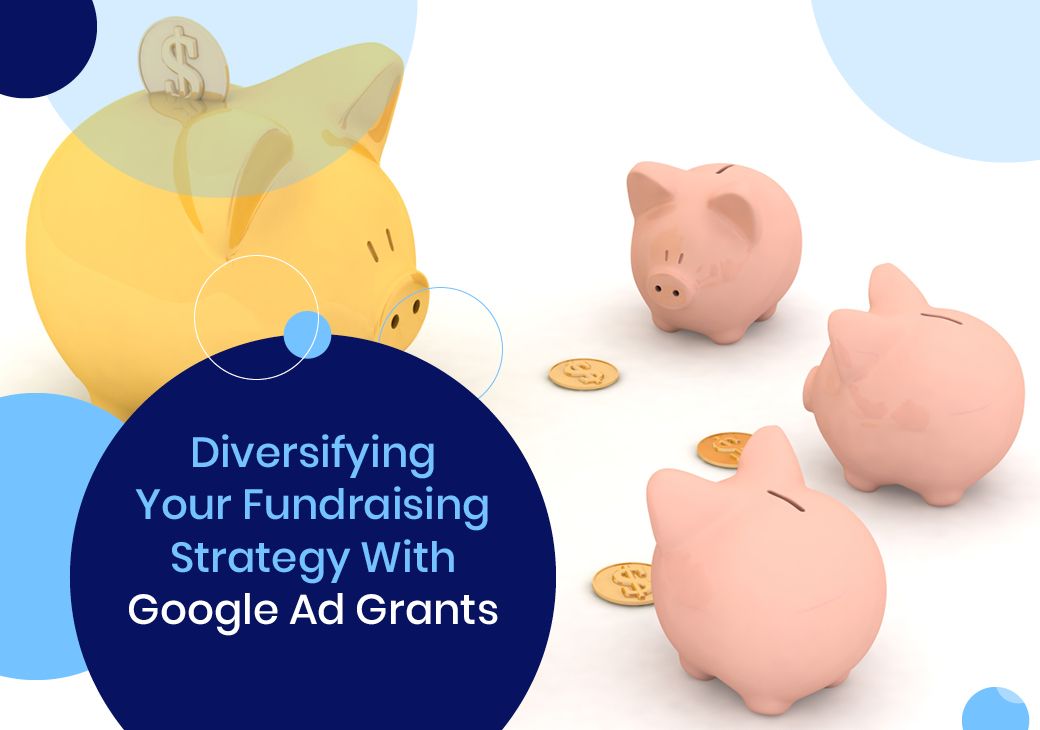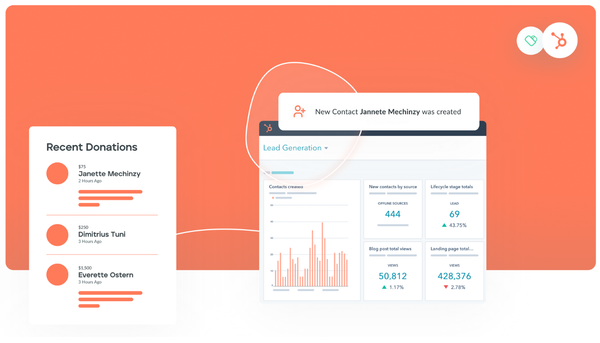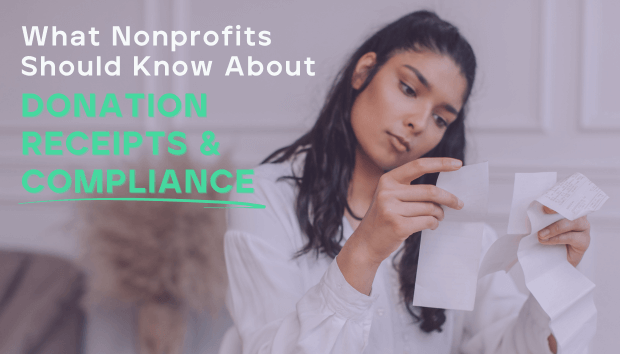Diversifying Your Fundraising Strategy With Google Ad Grants
The Google Ad Grant presents an opportunity to diversify your fundraising strategy. Try advertising these five avenues for engagement with your nonprofit.

Anyone with fundraising experience knows that it's often more of an art than a science. While there are proven strategies and techniques, it’s possible to exhaust existing contacts or have a string of bad luck. A lull in fundraising may be temporary or permanent, but this experience always quickly reminds nonprofit professionals of the need to diversify.
Diversification bolsters your organization against the myriad of circumstances that can create hard times. While this principle doesn’t protect your nonprofit from great shifts in funding, it will provide more consistent fundraising solutions over the long term.
One way to diversify your fundraising strategy is to use the Google Ad Grant. You may be familiar with Google Ads— the sponsored links that appear at the top of any Google search. Those ads are hotly contested commodities, as companies use Google Ad accounts to bid on them. The Google Ad Grant allows nonprofits to compete for this space at a minimal cost. When acquired, the Grant gives nonprofits up to $10,000 every month to bid on this ad space.
Using Google Ads is a great way to bolster your existing fundraising or marketing efforts. One of the great virtues of the Google Ad Grant is its flexibility. With proper management and strategy, you can use the Grant to pursue goals of your choice. With your Google Ad space, you can choose to…
1. Drive Traffic To Your Website
Driving traffic is one of the most basic things you can do with your Google Ad Grant. When people click on your ads, they’ll be taken to a landing page on your website. Even if they don’t stay or take any other action, you’ll have more visitors than you otherwise would. Obviously, that’s not enough to build a fundraising campaign, but there’s plenty you can do in tandem with your Google Ad Grant to get visitors to stay, browse, and donate.
To get the most out of the traffic your Google Ads will generate, you’ll want to commit to improving the quality of your website and its content. Further, you’ll want to use the plethora of data analytics tools available to you.
This approach will help you learn how your users engage with your website and give you the tools to make changes and adapt to their needs. Whether this is all you do with the Ad Grant or is the beginning of a multifaceted marketing strategy, these principles will lay the foundation for success.
2. Direct Users Straight To Your Donation Form
Google Ads give you complete control over where you send those who click on your ads. So long as the ads are minimally compliant with Google’s standards, you can direct them anywhere you want. Therefore, some organizations may choose to cut their website out of the process and instead direct users straight to the donation form. This is a high-risk, high-reward strategy that should not be done without careful consideration.
In most cases, it’s better to use your Ads to direct users to a more general page on your website. There are a few reasons for this:
-
First, you’re asking for less from the visitor. A donation is a big request and not all visitors will be inclined to give. By directing them to a more general location on your website, they can learn more about your organization and then later may be more inclined to donate.
-
Second, you can more efficiently use your website. While driving donations is an important goal, you may have other priorities too. Not all visitors will donate, but some may sign up for your newsletter or watch a video on your site. An indirect strategy enables the visitor to consume the content they want, even if those conversions aren’t as valuable for you.
-
Third, a more general page will promote long-term engagement with your organization. As many nonprofit professionals know, it can take a long time to cultivate donors. This is true in the digital space as well. While new visitors may not be willing to donate, they may be inclined to come back to your site, especially if it has the content they’re looking for. Returning users can be identified and targeted as potential new donors, maximizing the effectiveness of a seasonal donation drive.
Whichever strategy you opt for, you must consider the quality of your donation page. No matter if the donor is a long-time supporter of your organization or a brand new one, you want them to have an easy experience that will make them interested in donating again.
3. Advertise Your Nonprofit’s Merchandise
The flexibility of the Google Ad Grant allows you to use it to bolster other aspects of your fundraising strategies. For example, many organizations sell merchandise, either as an integral or supplemental part of their fundraising efforts.
Unlike direct donations, selling merchandise lends itself to the strengths of the Google Ad Grant. Even first-time visitors may be more likely to spend money if they’re getting a product in return. Further, this approach has the added benefit of driving people to your website and helping them become familiar with your organization. One difficulty that comes from merchandise sales as a fundraising strategy is that it can be expensive to advertise. With the Google Ad Grant, that problem is greatly reduced.
4. Promote Events
A more indirect strategy to bolster your fundraising efforts is to use the Google Ad Grant to promote your events. Especially with the increasing popularity of online events plus geotargeting technology, you can use Google Ads to target incredibly specific audiences.
Geotargeting allows you to specify which geographic areas you want your ads to display within. This ensures that you won’t be wasting valuable resources reaching out to people who couldn’t possibly attend your event.
Promoting your events with Google Ads ensures that your event’s audience is wider than it otherwise would have been. Since events are often fundraising opportunities, increased attendance only furthers this potential. Also, these events can engage new audience members for the first time, cultivating long-term relationships and growing your donor base.
Some nonprofits go even further with how they use their Google Ads for promotion. In some cases, they can be used to find speakers or performers for the event itself. For example, a geotargeted ad relevant to local musicians may help you discover an affordable entertainment solution. Using the Google Ad for this purpose will require some good keyword research to target your desired action. In any case, one of the great virtues of the Google Ad Grant is that nonprofits can use it creatively to meet their needs.
5. Push Volunteer Opportunities
Part of a diversification strategy is thinking about both the short and long-term plans for your organization. While a direct fundraising event is often a necessary short-term solution, growing and maintaining your audience is a crucial precondition for long-term fundraising success.
Thus, a great use of the Google Ad Grant is to advertise volunteer opportunities with your organization. Like the other suggestions in this article, this strategy has numerous benefits beyond simply fundraising.
Nonprofit professionals know that there are certain events or projects in their work that are labor-intensive. Perhaps your organization does an annual event for donors and community members, or there’s a massive mail or advocacy campaign. Organizations with the capacity often look to volunteers to fulfill this temporary labor. This allows their professionals to focus on their tasks without sacrificing the essential work that needs doing.
Pushing volunteer opportunities with your Google Ad Grant expands your existing audience, but also forges deeper connections with your existing ones. Using analytics tools, you can attempt to target your existing supporters, making them aware of an opportunity to help in a non-monetary way. This is a long-term fundraising strategy, as building a donor base requires strengthening these relationships and getting more people involved with your organization.
Diversifying your nonprofit’s fundraising efforts is a smart way to bolster your organization’s future. Not only does this create immediate benefits, but it also has positive impacts on long-term fundraising potential and donor stewardship. On both fronts, the Google Ad Grant is a valuable asset that will make your fundraising endeavors more efficient and effective.
Using the Google Ad Grant, you’ll expand your audience by spreading the word about your organization, its mission, and events. The Grant can be used to drive traffic to your website, which can be leveraged into valuable conversions with proper website design. As you and your team think about your fundraising strategy now and in the future, take advantage of the cost-effective Google Ad Grant to make the most of your efforts.





